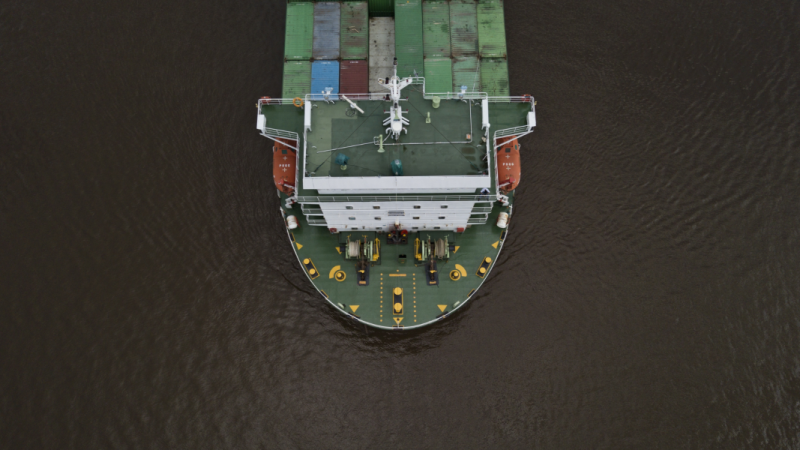Going Green with Your SMB Supply Chain: Sustainable Shipping Solutions

Categories :
When it comes to doing business sustainably, the larger companies tend to get all the headlines. We see giant corporations declaring long term goals around things like ESG and carbon neutrality while making flashy announcements about going green.
And while this is certainly not a bad thing, it's important to remember that small and medium sized businesses (SMBs) also play a critical role in global sustainability, too. In fact, SMBs represent a whopping 90% of all businesses worldwide - so you can imagine the positive impact that would come from a collective effort to operate more eco-consciously.
So, if you are starting to explore the ways in which your business can “go greener,” it’s likely that your supply chain operations - how you transport, package, and stock goods - are where you will be able to make the most difference. Yet unfortunately, the behind-the-scenes inventory and logistics processes usually get left as an afterthought by busy store owners trying to score sales and please customers.
But here’s the thing - SMB owners typically have more influence than they realize over their environmental footprint based on shipping strategies, packaging decisions, and energy use in their warehouses. Little tweaks end up reducing waste generation and emissions. Not only is that good for the planet, but it also helps boost brand reputation and can cut down significantly on costs.
Opt for Sustainable Shipping Methods
As you might expect, one of the biggest carbon generators for small businesses is moving their products from point A to point B. All those trucks, planes, and ships delivering your goods add up, impacting your climate footprint.
Instead of just going with the cheapest or fastest freight option by default, take a bit of time to compare the environmental pros and cons across your shipping choices. Some greener picks to consider:
- Sea freight - For high-volume, non-urgent deliveries, ocean transport produces way less CO2 per item than air. Yeah, it's slower, but it usually costs less, too.
- Rail freight – Trains can reach places trucks don't go and pollute less than road transports. Intermodal rail solutions work well for some North American supply chains.
- Electric vehicles – Go electric if your delivery routes allow it. Using e-vans, e-trucks or e-bikes cuts gas dependence and local air pollution.
- Cut packaging waste - Decline non-essential wrapping from vendors and carriers. Removing unneeded boxes and fillers cuts disposal later.
Also, consider using a freight forwarding platform that allows you to compare shipping modes and tailor the greenest routes by taking into account emissions data. Digital freight forwarders offer a one stop shop to increase efficiency, visibility, and environmental gains.
Smart Packaging Strategies
What you use to pack and ship products also impacts your supply chain sustainability. Globally, millions of containers and tons of cardboard get generated each year, and a lot of it gets trashed. The good news is that there are two easy ways to shrink packaging footprints: use less packaging or more eco-friendly materials when possible.
- Cut excess packaging - Audit all boxes, mailers, wraps, and inserts that you currently use. Remove what you safely can without compromising protection (or the customer experience). Even small cuts quickly lessen materials bought, weight shipped, and waste created.
- Choose greener materials - Swap plastics and hard-to-recycle items with sustainable swaps, such as:
- Recycled cardboard and paper
- Mushroom packaging
- Biodegradable plant-starch paper
- Reusable durable containers
- Compostable bubble mailers
If you do decide to opt for more sustainable packaging, make sure you communicate it to your customers. There is a rising interest in business sustainability, and you may find that a lot of customers will be receptive to your efforts. This could result in greater brand affinity, loyalty, and ultimately, boosted sales.
Invest in Energy-Efficient Warehouses
For SMBs with their own warehouse or inventory storage spaces, it is definitely worth looking into updating to more energy efficient systems. Things like motion sensor LED lighting, upgraded insulation, and high-efficiency heat pumps can reduce electricity usage and costs significantly. While this may seem trivial, once again, all of the small savings add up fast - and they compound over the long run.
You can also think about power sources - see if solar panels or wind turbines are viable to generate clean energy to power your warehouses. The upfront investment is usually going to be worth it through years of lower utility bills and smaller carbon footprints from your operations.
Incorporate Green Criteria Into Supplier Selection
When it comes to sourcing all of the products and materials that run through your supply chain, it’s likely that certain types of vendor qualification process prefer certain suppliers over others. Here, you could give preference to ones running more sustainable operations themselves.
See if potential vendors run eco-conscious facilities and offices. Do they track carbon emissions or have public goals to reduce waste from their own supply chains? Make sure business partners align with your sustainability mission rather than undermine it.
Giving preference to green vendors incentivizes more companies to prioritize planet-friendly practices in hopes of winning your business, but there is definitely a tradeoff to consider here. Realistically, the green option is not going to be the cheapest, so this will likely require some sort of sacrifice, at least in terms of raw expenditure.
Final Word
Implementing green supply chain solutions as a small business does require some extra effort upfront. But the payoff down the road - through cost savings, brand reputation gains, and reducing environmental harms - makes it worthwhile.
Follow the practical guidance outlined here around shipping methods, smart packaging, green warehouses, and partnering with like-minded suppliers. Little by little, SMBs can collectively drive big sustainability improvements across interconnected global commerce ecosystems.
Citiesabc was created by a team of global industry leaders, academics and experts to create new solutions, resources, rankings and connections for the world’s top cities and populations.










